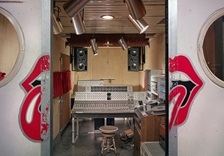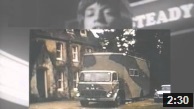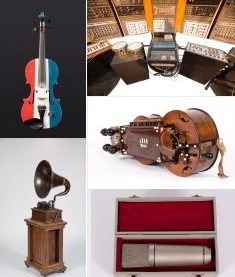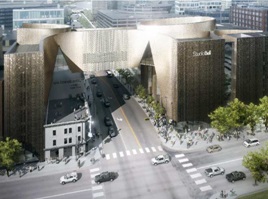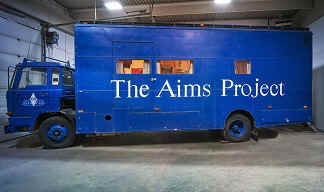|
Exclusive Interview for The School ES2A John Leimseider the electronics technician, who is helping to restore ROLLING ST Mobile Recording Studio for The National Music Centre
Josť Mujica |
  Spanish |
|
| Heaven
doors
Dreams. Can you image being
inside?
A Youtube Clip
Travel partners The mobile won't be alone, the National Music Centre has a desirable collection of over 2,000 rare instruments and artifacts, which will be on display at its new facility when it opens in spring 2016.
|
John Leimseider is the technician that is restoring the RSM, and bringing back to its glory days. NMC honours us in our 20th Aniversary with this exclusive interview for our readers.
ES2A: John, we would like to know a little bit about the epic tale of how the mobile came from New York to the National Music Centre. John: The Rolling Stones Mobile Studio (RSM) was bought from its previous owners in New Jersey. It had been used for a few years in New York, particularly at CBGB's, the famous punk club where the Ramones, Blondie, Television, etc. used to play. One of our collection managers flew to New York and tried to drive it back. The engine had problems in the Midwest. It was then put on a flatbed and brought to us. The truck, which is a DAF diesel right-hand-drive vehicle, had been changed many years earlier in England. We did drive it a very small amount after it got here to get it into a garage where we had it parked for a while, but it was very smoky. We have drained all the fluids for safety, and it will be permanently installed in the new National Music Centre (NMC) facility when we open to the public in the spring of 2016.
ES2A: Does the RSM still have all of its original equipment or has anything been changed over time? John: When we got it, there
was a lot missing. We had the console, speakers, four tape decks, Dolby systems, cabling,
and some outboard gear. The microphone collection had already been sold. |
ES2A:
We know the original mixer is a Helios, but what about the loudspeakers? John: The loudspeakers are
made by Klark-Teknik and were modified with Dynaudio speakers by Andy Munro in England.
They were installed when the AIMs Project started. Originally, the RSM was for tracking,
with little concern for mixing, which would be done in larger commercial studios at a
later time. With AIMs, the mixing would also be done in the mobile in addition to the
tracking, so the KT speakers were installed. ES2A: What can you tell us
about the MTR (The Machine Tape Recorder)? John: The latest version of the RSM had two
24-track 2" 3M M79's, a two track M79, and a modified variable speed 7.5 and 15 ips
Revox A77 for slap back echo. We are in the process of restoring the tape decks. One of
the 24-track machines is working well, but still needs some more work. John: When we got the RSM, there was a Crown
D60 and a Yamaha amp. We are currently using an old Altec 8 channel amp to drive the
tri-amped Klark-Teknik speakers and the Yamaha to drive the JBL 15" subwoofers. ES2A: Are you going to
use the same acoustical material? |
ES2A:
Have any artists or bands that have recorded using the RSM talked to NMC in order to help? John: We have been very fortunate to have some great support from Mick McKenna, who worked with the RSM for many years. He has an amazing memory, and some excellent documentation. He is truly a great resource for us and has gone above and beyond to help. We also got an email from Reinhold Mack, a very well known German producer asking if his studio business card was still on the armrest section of the console. It was. So I sent him a picture of it. He used the RSM to record Queen twice. He had an almost matching Helios console in his studio back in the day. We have received a lot of great emails and phone calls from fans all over the world. The positive comments and support has been really exciting. So much amazing music was recorded with the RSM. It changed the way music was made, and we can still see its influence today. ES2A: Do
you have any advice for the next generation?
NATIONAL MUSIC CENTRE 134 11 Avenue SE
Our Thanks to Julijana Capone, publicity coordinator at the National Music Centre for her support for this interview. |


